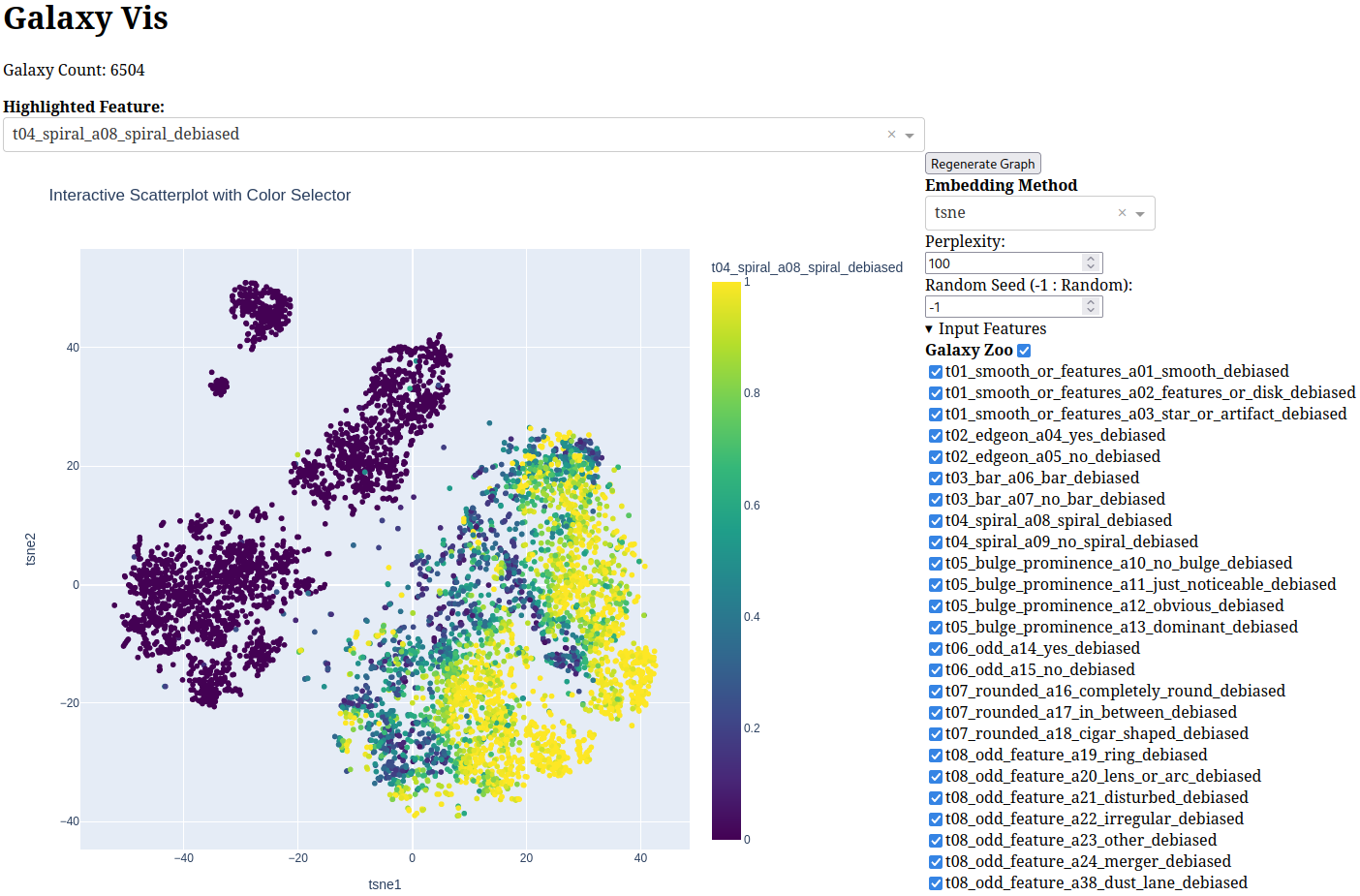Interactive data visualization/exploration tool for MaNGA survey galaxies.
Inspired by Nathan Rooy's visual book recommender, Galaxy Vis is an interactive web browser-based tool that combines data from SDSS value added catalogs (VAC) to perform embeddings of galaxies for further analysis.
Below is an example t-SNE embedding using Galaxy Zoo morphology feature data with confidence in spiral-type galaxies highlighted. Hovering over a data point will reveal the MaNGA ID for the respective galaxy and clicking the data point will open the galaxy's page on Marvin for more detailed examination.
In addition to embeddings, a number of clustering algorithms are available for automatically classifying data points. Cluster labels can be exported for usage in external analysis.
Below are the results of running agglomerative clustering on the above embedding. These charts are automatically produced in Galaxy Vis and are interactive with configurable parameters for adjusting the clustering algorithm. T-Type classifications are taken from the MaNGA Visual Morphologies VAC and are not used in the embedding input feature set.
Currently, Galaxy Vis has only been tested on Linux.
conda is used for managing Python dependencies. To setup the
environment:
conda env create -f galaxy_vis_env.yml
The get_data.sh script will download the needed VACs to the ./data directory.
./get_data.sh
Once the required libraries and data sets are installed, Galaxy Vis
can be run with the galaxy_vis.py script.
python galaxy_vis.py
After some setup, a message will be displayed as shown below. Navigating to the given local host address with a web browser will open up Galaxy Vis.


